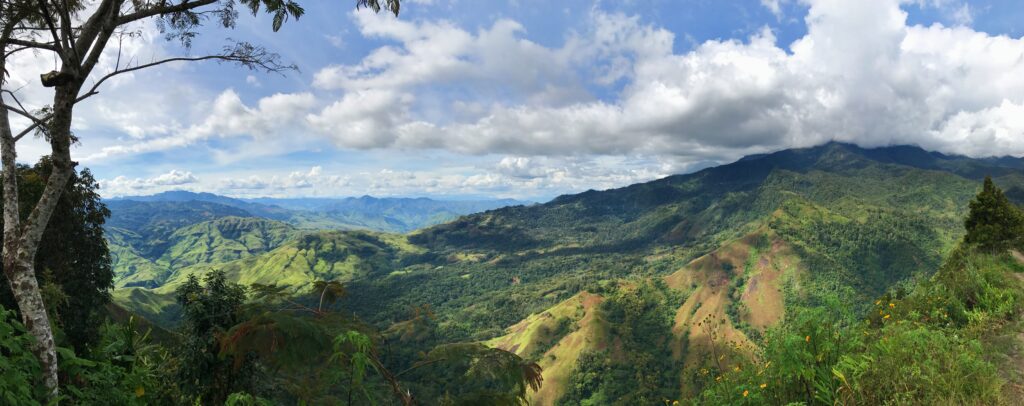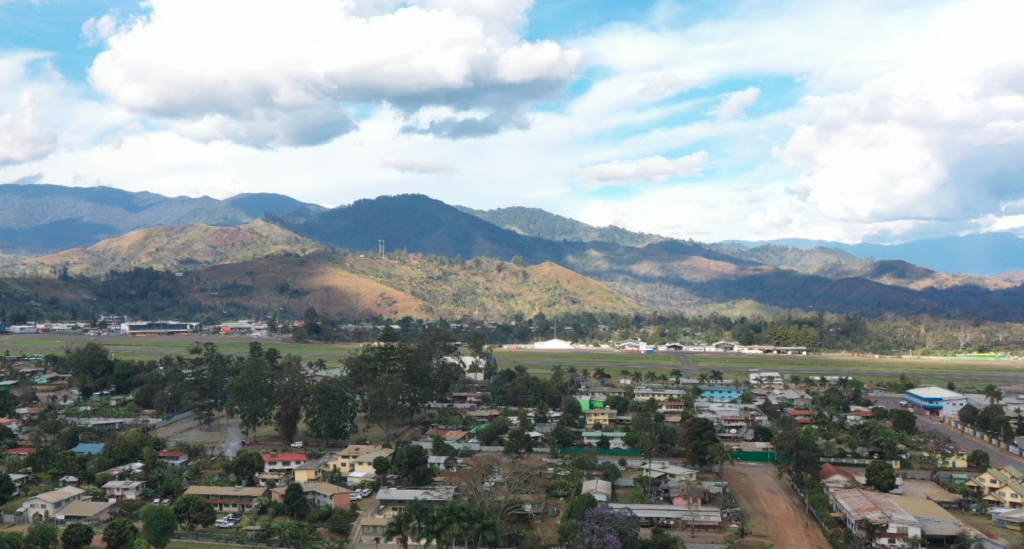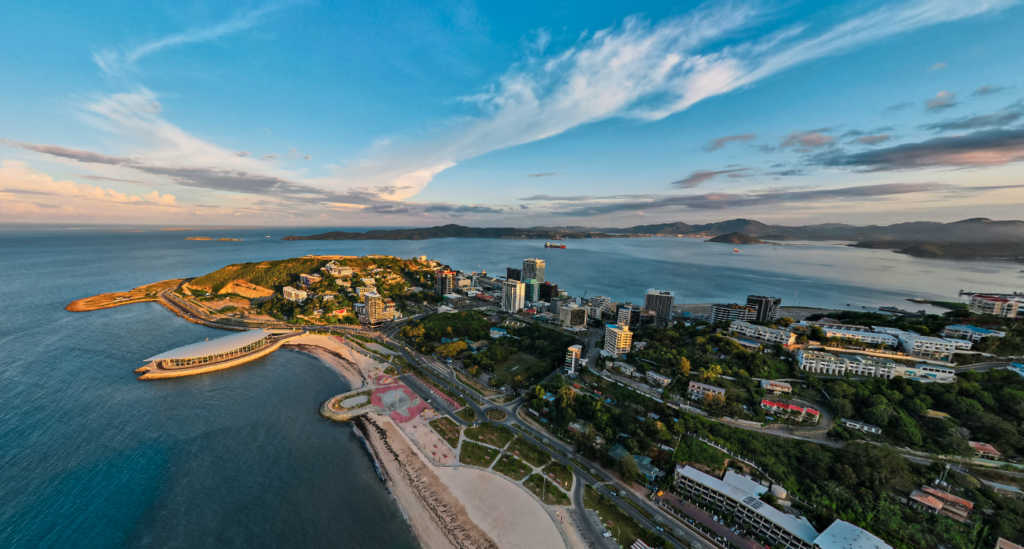Papua New Guinea / Independent State of Papua New Guinea / Independen Stet bilong Papua Niugini / Independen Stet bilong Papua Niu Gini- Let’s explore here

What’s it like in Papua New Guinea?
Papua New Guinea is the world’s third largest island country, about twice the size of the United Kingdom. It is comprised of the eastern half of the island of New Guinea and its offshore islands in Melanesia. It shares its only land border with Indonesia to the west.
The mainland consists of a ridge of mountains, tropical rainforests and wetlands. There are several active volcanoes, and eruptions are frequent. Earthquakes are also relatively common, sometimes accompanied by tsunamis.
The highest point in Papua New Guinea is Mount Wilhelm at 14,793 ft (4,509 metres) above sea level.

A bit about the history of Papua New Guinea
Early Settlement and Indigenous Cultures
Papua New Guinea has been inhabited for tens of thousands of years by diverse indigenous groups. These groups developed distinct languages, cultures and social systems, with more than 800 languages spoken across the country today. The people of Papua New Guinea were mainly hunter gatherers and agriculturalists, with various tribes practicing traditional customs and religions.
European Exploration and Colonisation
The first European contact with Papua New Guinea occurred in the 16th century when Portuguese and Spanish explorers navigated the region. However, it wasn’t until the 19th century that more systematic exploration and colonisation took place. The northern part of the island became a British protectorate, while the southern part was colonised by the Dutch, later becoming part of the Dutch East Indies. In the late 19th century, German colonial interests expanded in the region, taking control of New Guinea.
World War I and Australian Administration
After Germany’s defeat in World War I, the League of Nations mandated the administration of German New Guinea to Australia. This led to the establishment of Australian control over the territory, which later became known as the Territory of Papua and New Guinea. During World War II, the island was a battleground between Japanese and Allied forces, with Papua New Guinea experiencing heavy fighting, particularly during the Kokoda Track campaign.
Post-War Developments and Self-Governance
After World War II, the Australian administration worked to develop the territory’s infrastructure, education and healthcare systems. In 1961, Papua New Guinea gained self governing status under Australia’s supervision. In 1973, the territory was officially renamed Papua New Guinea.
Independence
On September 16, 1975, Papua New Guinea gained full independence from Australia, becoming a sovereign nation. The country adopted a parliamentary system of government, and its first prime minister was Michael Somare. The newly independent nation faced challenges in unifying its diverse ethnic groups and addressing issues such as economic development, political stability and healthcare.
Recent Developments
Since independence, Papua New Guinea has made significant progress in education, healthcare and infrastructure development. However, challenges such as poverty, political instability and environmental degradation persist. The country has also faced internal conflicts, notably in the Bougainville region, where a secessionist movement led to a brutal civil war from 1988 to 1998. A peace agreement was reached in 2001, and in 2005, Bougainville became a self-governing region within Papua New Guinea.
The economy is largely dependent on natural resources, including oil, gas and minerals, with significant contributions from the agricultural sector. Despite rich natural resources, Papua New Guinea remains one of the poorest countries in the Pacific, and issues such as corruption, violence and inadequate public services continue to pose challenges to its development.
Modern Day Papua New Guinea
Today, Papua New Guinea is a constitutional monarchy with the British monarch as the head of state, represented by a Governor-General. The country is a member of the Commonwealth of Nations and several international organisations. While there have been notable strides in development, Papua New Guinea faces ongoing challenges in governance, health, education and economic diversification. The government continues to work toward improving the living standards of its population and addressing environmental concerns such as deforestation and climate change.

Papua New Guinea road trip
We haven’t finished our planning for our road trip through Papua New Guinea yet. When we do though, we’ll post it here, and in the blog.
Hopefully our journey will improve our knowledge of this intriguing and beautiful country, and enable us to meet some interesting people. We’ll be updating this page at that time – don’t forget to check back 🙂
Map of Papua New Guinea

What’s it like to drive in Papua New Guinea?
They drive on the left hand side of the road in Papua New Guinea.
We’ve also created a dedicated page to driving abroad, which you might find helpful 🙂
What currency do they use in Papua New Guinea?
In Papua New Guinea they use the Kina. The use of credit / debit cards is not widespread, you should take cash in more remote areas. Travellers cheques are only accepted in very touristy areas. There are ATMs in major tourist areas.
You should make yourself aware of the amount that your bank charges you for using credit and debit cards abroad. Often credit cards are cheaper for purchasing items directly, and for withdrawing cash from ATMs.
What language do they speak in Papua New Guinea?
They speak English, Tok, sign language, and Hiri Motu in Papua New Guinea. Papua New Guinea is the most linguistically diverse country in the world, with 856 languages, accounting for 12% of the world’s total languages.
What time zone is Papua New Guinea in?
Remember, when you’re planning your next trip to take a look at what time zone it’s in.
Do I need a visa to visit Papua New Guinea?
We’ve created a dedicated, more comprehensive page on visas, which you should find helpful. Check it out!
Is wild camping legal in Papua New Guinea?
No, wild camping is illegal in Papua New Guinea.
What plug / socket type do they use in Papua New Guinea?

In Papua New Guinea they use plug / socket type I.
Health issues in Papua New Guinea
Is it safe to drink water in Papua New Guinea?
No, it is not safe to drink tap water in Papua New Guinea. Bottled water is readily available throughout the country.
What vaccinations are required for Papua New Guinea?
This NHS website is kept up to date with all relevant information on vaccinations in Papua New Guinea.
Phones in Papua New Guinea
What is the country calling code for Papua New Guinea?
The country calling code for Papua New Guinea is +675
What are the emergency phone numbers in Papua New Guinea?
- The emergency number for police in Papua New Guinea is: 112
- In Papua New Guinea, the emergency number for ambulance is: 111
- The emergency number for fire in Papua New Guinea is: 110
If you’ve got some useful info that you’d like to share, let us know!
And don’t forget to check out all the other pictures!
